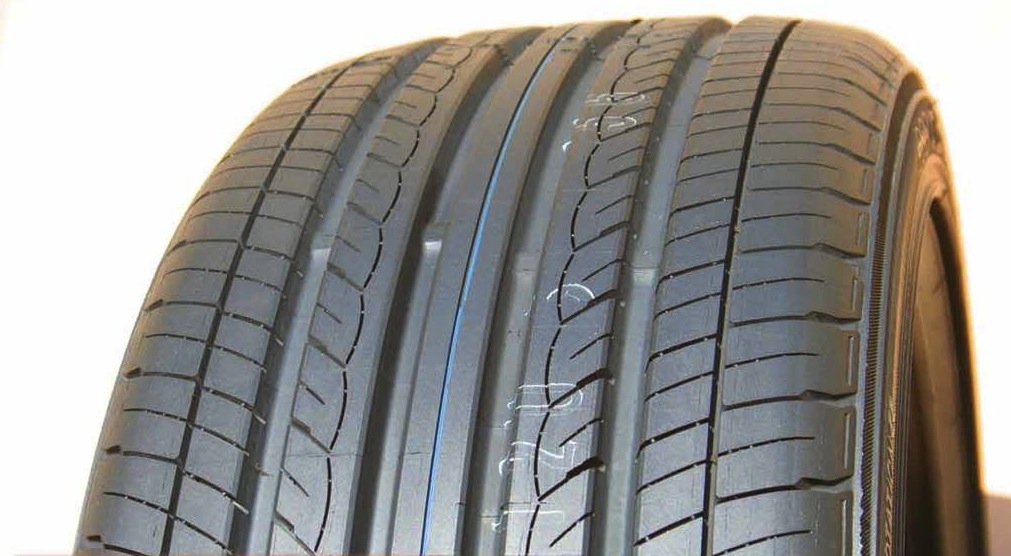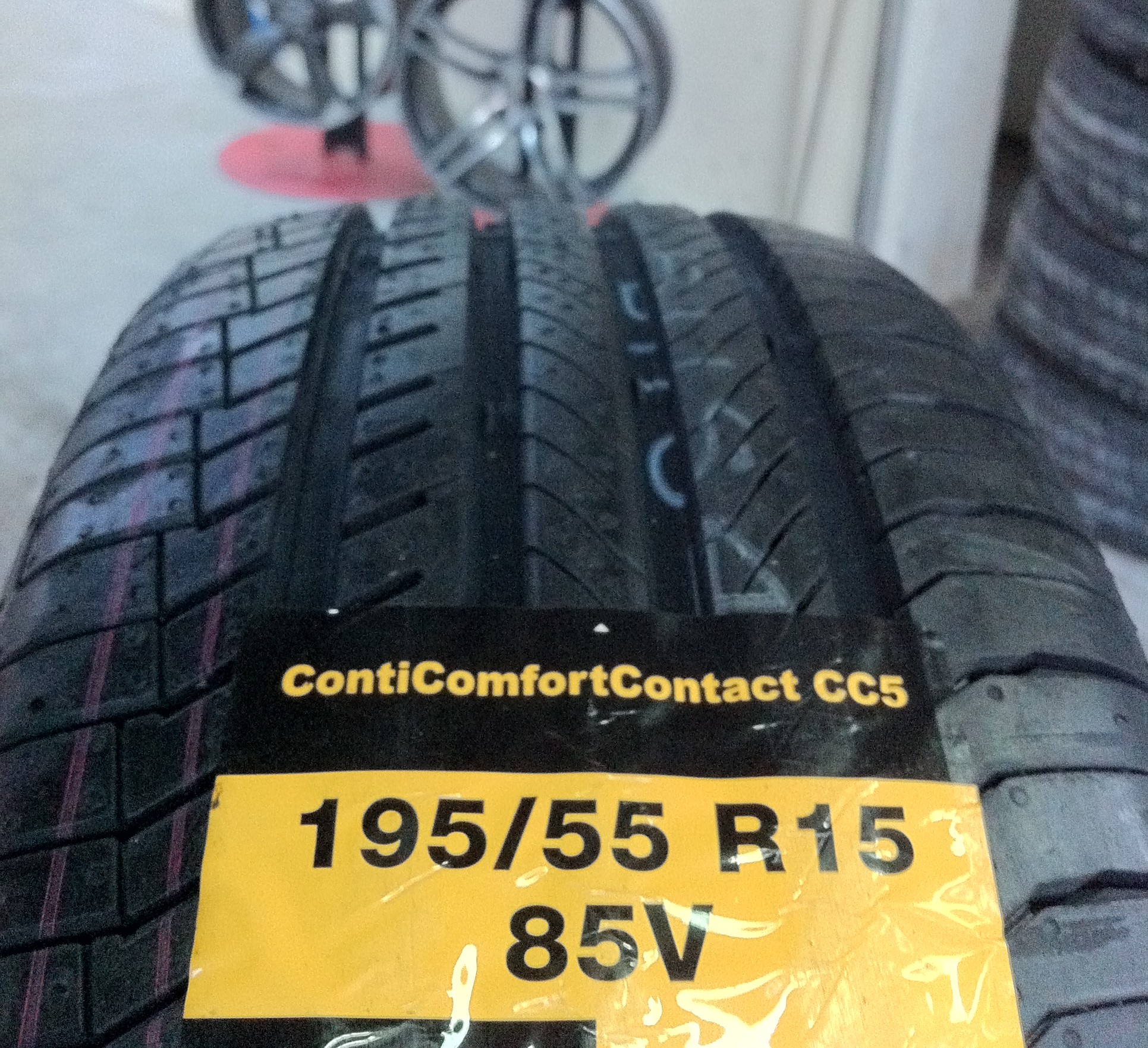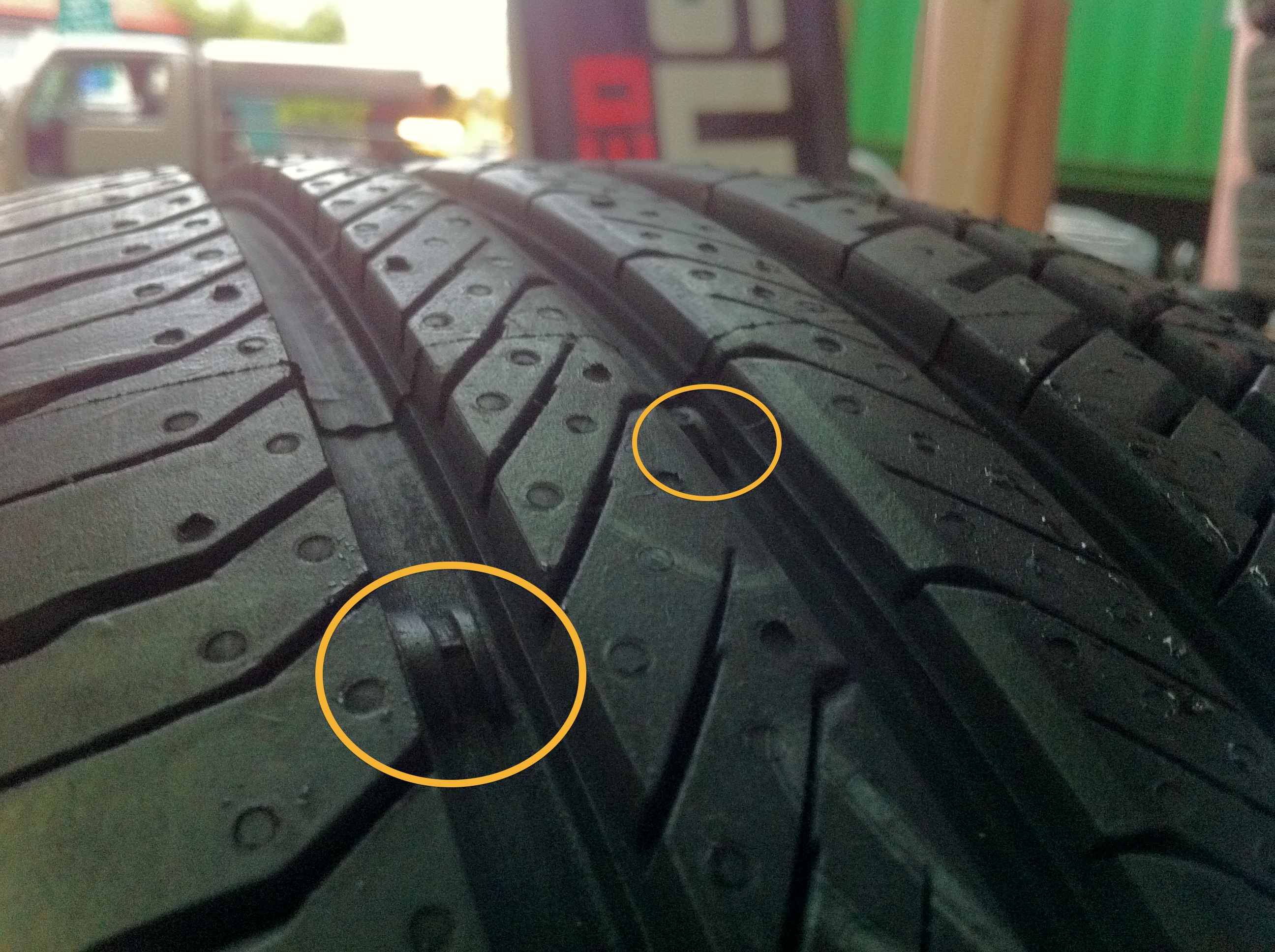“Quiet” & “Comfortable“; these are perennial questions we at Autokinetics are usually posed with. These are discerning drivers who are very sensitive to road noise, and demand tyres that are able to provide the best noise suppression in the market. These are the drivers who value comfort over other performance indexes provided by the manufacturer.
Usually on the market, our most famous quiet tyre is a certain “deciBel” tyre, which was once fitted on my dad’s Cefiro. Granted, it was the quietest tyre I have ever experienced, and it improved the ride comfort leagues above the stock tyres. However, on bends in the wet (at < 50 km/h), it was similar to grasping a slippery rope that you are supposed to cling on for dear life.

Here in lies the underlying problem, manufacturers, in the quest to reduce road noise levels, generally create grooves which are extremely thin (as observed above) to prevent what we call the “slapping” of tyre blocks on to the road. The thinner the gap between the blocks, the greater the noise reduction. However, it is these blocks that actually grip the road, much like military tank tracks that claw the terrain, and the less width these teeth have, the lesser it grips. This makes the above mentioned tyre truly “exciting” (or dangerous) to drive.
At Autokinetics, we have our usual pedigree of preferred Premium Touring tyres, such as the Michelin Primacy HP, Dunlop Veuro VE302, Pirelli P7, specially catered for our customers who have an ear for music. Now, Continental has a new entree into the Premium Touring category: the new Continental ComfortContact 5, or simply known as CC5.
Marketed in the Asia-Pacific region under the ebony stallion Continental brand, the CC5 is designed for small to medium cars which usually possess high profile sidewalls, from profile 50 to profile 65. The CC5 features Continental’s proprietary “Silent Tread Pattern Groove Technology” with “Noise Breakers” that works to break air waves along the longitudinal water channeling grooves. Let’s show you what I mean…
Located all around the 4 water channels around the tyre, these noise breakers are designed to break up laminar flow of air in the water channels which may cause resonance and thus noise. In addition, fuel efficiency is improved by an estimated 10% over the CC1 thanks to a series of innovative technology;
- Advanced Silica compound
– To reduce rolling resistance of the tyre against the road surface, and to reduce resonance generated
- Asymmetric tread design with V-shaped inner ribs
Being designed for Asian roads, one would expect this to be over-engineered due to the inherent condition of roads in our region. Not surprisingly, Continental has also added 2 layers of Polyamide into the tread for improved structural integrity. Polyamide possesses enhanced durability and strength when compared to classic materials used in tyre construction, such as steel. This means that a tyre can be manufactured stronger, yet lighter. Quality brands such as Michelin and Dunlop has also incorporated the use of Polyamides in their tyre construction.
So let’s put this tyre to the test on baby smooth Singapore roads. We have mounted a set of 195/50/15 82V tyres on a Honda Jazz and driven it around our area for testing. A short jaunt down PIE was enough to get the tyre to be warmed up and run in and ready for our road review. The CC5 exhibited extreme noise suppression when driven at an average speed of 80-90 km/h, in which normal tyres would have already emitted road noise. On dry roads with twisty and speedy corners, the CC5 excelled in dry grip and exhibited impressive traction, only protesting when pushed to the limit.
Similarly, in the wet, the car was deathly silent. As the wet road dampened the road noise, we could only hear the irritating drone of the Honda Jazz engine and the rain pattering on the tin-can roof. However, one should not drive in the wet with the CC5 as if you were on sports tyres, as the softer rubber compound will not inspire confidence as a thoroughbred sports tyre if you are cornering at bordering insane speeds. Then again, the CC5 was never designed for this kind of aggressive driving in the first place.
In our braking tests, the CC5 excelled once again, as the V-shaped inner ribs held their rigidity and the car never felt unsettled when subjected to heavy braking, with the Jazz’s ABS seldom activating. This is a testament to the modern tyre construction technique with the use of newer and innovative materials.
In comparison with its competitor’s quiet tyre, the CC5 definitely has an edge, especially in the wet performance area. Granted it does not perform as invincibly as the Michelin Pilot Sport 3 in the wet (which is in a totally different tyre category), but it does not leave you guessing and does not force you to adapt and slow down massively in the wet. In other words, this is what a normal Premium Touring should be: safe, quiet, durable.
In fact, we are so confident in the noise suppression of these tyres that we are allowing our customers to swap back to their original tyres from the Conti CC5 tyres if they do not meet their requirements for a quiet and comfortable ride, with labour charges waived. At AutoKinetics, we stand by our review, the Way it should Be.
The Continental ComfortContact 5 is immediately available in a variety of sizes from 14″ to 16″. Please call us at 9185 3389 or email us at sales@autokinetics.sg .

AutoKinetics – The Way it Should Be





